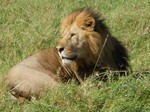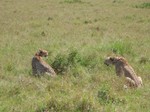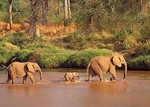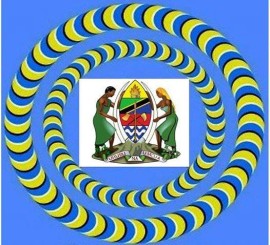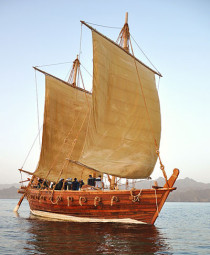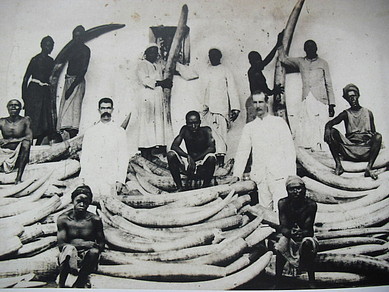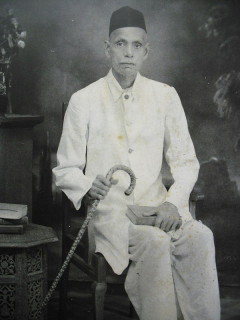Reason Behind Naming of Major Kenyan Towns
Kenya Cities and Towns…how they derived with a current name..
https://www.facebook.com/642241077/videos/828285265418975?idorvanity=1618523391734483
Travel News Kenya
HerdTracker
Go See The Migration
Truly Breath taking!
Witnessing thousands of wildebeest crossing the Mara River in the Northern Serengeti.
CONTACT US TODAY if you wanna see the breath taking Mara River up close like Shlomo Carmel: https://goo.gl/msKv7k
Our experts are ready to help you plan the journey that gets you closer to the herd or answer any questions that you may have.
On Facebook
https://www.facebook.com/herdtracker/
All aboard! The Chinese-funded railways linking East Africa
http://edition.cnn.com/2016/11/21/africa/chinese-funded-railways-in-africa/
Kenya Tourism
Live Link to see Elephants at the Ark
Lots of elephants at the ARK right now, click on the link to view them NOW, http://thearkcam1.click2stream.com/
Sarova Stanley
The Stanley was Mayence's first husband's middle name (W. S. Bent) and was not named after Henry Morton Stanley. Mayence had come to Mombasa from West Africa in 1898 as the wife of W. S. Bent, a railway employee, who had worked on the Nigerian Railway. She was capable and ambitious by the time she was thirty in 1901, was Nairobi’s first dress-maker and milliner. She had an infallible instinct for what women wanted and needed, from a flowered toque to a muslin dress, coming into her own once there were regular fixtures for race meetings. Despite the daintiness of her trade however, she was not above emptying the chamber pots from the balcony of The Stanley into Victoria Street to save herself a journey downstairs to the sanitation ditches. She was also very frugal and when fire broke out in 1905, dropped the new enamel chamber pots one by one into the street rather than give them up to the fire....Narrated by Stephen Mills
http://www.tripadvisor.co.uk/Hotel_Review-g294207-d302829-Reviews-Sarova_Stanley-Nairobi.html
A Brief History on Kenya
Pre-colonial history
Around 2000 BC, Cushitic-speaking people from northern Africa settled in the
part of
East Africa that is now Kenya. By the 1st Century AD, the Kenyan coast was
frequented by Arab traders, who due to Kenya's proximity to the Arabian
Peninsula, established Arab and Persian colonies there. The Nilotic and Bantu
people also moved into the region during the first millennium AD. and settled
inland.
Cont: http://www.kenyarep-jp.com/kenya/history_e.html
- Kenya Government website
- State House
- Ministry of Foreign Affairs
- Ministry of
Information and Communications - Ministry of Planning and
National Development-Kenya Bureau of Statistics
http://www.mahalimzuri.virgin.com/en/mahali_mzuri
The Early History of Kenya’s National Parks by Dame Daphne Sheldrick
Over 60 years ago Kenya’s first generation of pioneer wardens, Bill Woodley, Peter Jenkins and David Sheldrick, travelled the main Nairobi-Mombasa road to Mtito Andei, then just a dusty dirt road, to begin the daunting task of transforming untouched and largely unexplored and inhospitable arid semi-desert wasteland into the famous National Park that Tsavo is today.
Tourism
The tourist industry in Kenya is the 2nd largest source of foreign exchange revenue following agriculture.[1] The main tourist attractions are photo safaris through the 19 national parks and game reserves. Other attractions include the mosques at Mombasa; the renowned scenery of the Great Rift Valley; the coffee plantations at Thika; a view of Mt. Kilimanjaro, across the border into Tanzania;[2] and its beaches along the Indian Ocean.
| Tourism in Kenya |
|
Kenya is one of the world’s most popular tourism destinations attracting millions of tourists over the past years. The country is endowed with attractive tourist sites, rich culture, striking geographical diversity and landscapes ranging from beautiful beaches, to animal parks and archeological sites.
Latest Traffic news: http://traffic.accesskenya.com/
The tourist destinations are well distributed all over the country. Currently, Kenya has six properties inscribed on the World Heritage List. These include cultural properties which are: Fort Jesus Mombasa, Lamu Old Town, Sacred Mijikenda Kaya Forest and Natural Properties which are Kenya Lake System in the Great Rift Valley, Lake Turkana National Parks and Mount Kenya Natural Forest.
Fort Jesus Mombasa
The Fort Jesus is one of the most outstanding historical sites and preservations of the 16th century. It was built and designed of Giovanni Battista Cairati with the aim of protecting the port of Mombasa from external invasion. The fort occupies an area of 2.36 hectares.
Lamu Old Town
Lamu Old Town is an exclusive tropical island and one of the oldest best preserved Swahili settlements in East Africa. It is one major center for the study of Islam and Swahili cultures with many elite visiting for educational purposes. It is built in coral stone and mangrove timber. Lamu is also characterized by the simplicity of many structural forms enriched by ideal features such as elaborately carved wooden doors, verandas, and inner courtyards.
http://www.tripadvisor.co.uk/Tourism-g294208-Lamu_Island_Coast_Province-Vacations.html
Sacred Mijikenda Kaya Forest
The Mijikenda Kaya sacred forests consist of 11 separate forest sites. It is yet another 16th century phenomenon with remains of several fortified villages locally known as Kayas. The land occupies 200km and is famed for bearing a living cultural tradition. Natural Properties
The Kenya Lake System The Kenya Lake System is located in the Great Rift Valley. It is an outstanding natural beauty consisting of relatively shallow lakes which are, Lake Bogoria, Lake Nakuru, and Lake Elementaita. The region is a home for sizeable animals such as the Black rhinos, Rothschild giraffes, lions and cheetahs. It is also a habitat to 13 globally threatened bird species and the single most important foraging site for the lesser flamingo. The area covers a total of 32, 034 hectares.
Lake Turkana National Parks
The Lake Turkana is a serene tourist site serving as a study centre for plant and animal communities and a rich animal habitat. It is a stopover for the migrant Waterfowl and a breeding area for the Nile crocodile, hippopotamus as well as various venomous snakes. The Lake is the most saline of all Africa’s big lakes. Many educationists visit the Koobi Fora deposits, an archeological site, which is rich in mammalian and fossil remains. The site has contributed a lot to the understanding of paleontology than any other site on the continent.
Mount Kenya Natural Forest
Mount Kenya is an extinct volcano with a very impressive landscape with four secondary peaks and 12 remnant glaciers. The four secondary peaks sit at the head of the u-shaped glacial valleys. It is the second highest mountain in Africa, 5, 199m and has forested middle slops.
The Government is working towards fulfilling the 2012 vision of receiving 2 million tourists in Kenya annually. Kenya has experienced a 15% tourist growth since 2009. The country recorded a total of 1,095,945 tourist arrivals in 2010, hitting the highest figure ever. The numbers have since went up during the first six months of 2011, from 549, 083 compared to 483,468 in the same period in 2010. These figures exclude cross border tourist arrivals which total to 700,000.
Contrary to the past years when Kenyans perceived tourism and holidays as an International affair, local tourism has increased considerably over the years. This has also contributed to the increase of tourism revenues and the impressive performance as well as aggressive marketing in non-traditional markets and efficient utilization of available resources.
The tremendous growth is posing new opportunities for new investors and for businesses already in the tourism industry that are willing to step up their services to meet current international needs. Kenya Tourist Development Corporation is mandated to develop and diversify the Kenya’s Tourism industry by financing and offering advisory services to new investors and businesses in the tourism industry.
Getting Married in Kenya: http://www.imagineafrica.co.uk/Kenya/Kenya_Weddings?gclid=CJyIkuj0_LkCFY7HtAodWHwAiA
Kenya Honeymoon: http://www.imagineafrica.co.uk/Kenya/Kenya_Honeymoons?gclid=CP_Kp7n0_LkCFXMQtAodKwcAwA
Family Holidays in Kenya: http://www.imagineafrica.co.uk/Kenya/Kenya_Family_Holidays?gclid=CLTojYz1_LkCFdHMtAodQQUAxw
Other sites to visit: http://www.imagineafrica.co.uk/Kenya/Kenya_Itineraries?gclid=CPytn631_LkCFTMftAod_noABg
http://www.imagineafrica.co.uk/Kenya/Designer_Holidays?gclid=CLmVgdfz_LkCFZPItAodRn0ALA http://www.tripadvisor.co.uk/Tourism-g294206-Kenya-Vacations.html |
Fairview Hotel
Nairobi’s Top 10 Restaurants You Need To Try
Move over London, move over New York: Nairobi’s multicultural restaurant scene is attracting cutting-edge, globe-traveling culinary talent. Kenya’s bustling capital is already renowned for its innovative fashion designers, stunning landscapes and tea and coffee trade, but it should also be recognized for its fast-growing foodie culture.
http://theculturetrip.com/africa/kenya/articles/nairobi-s-top-10-restaurants-you-need-to-try/
Tusker : The story behind the name
http://www.theeagora.com/tusker-the-story-behind-the-name/






















